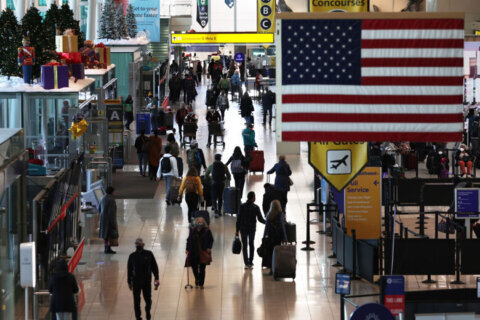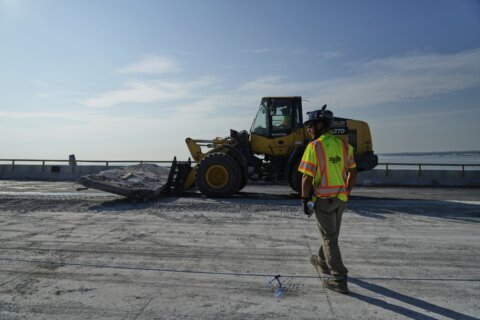This article was republished with permission from WTOP’s news partners at Maryland Matters. Sign up for Maryland Matters’ free email subscription today.
The collapse of the Francis Scott Key Bridge will cost the state an estimated $141 million in lost toll revenue over six years and may bring toll increases a year sooner than expected.
That projected loss makes up the lion’s share of the revised forecast that includes a decrease in toll revenues across all facilities.
“The forecast reflects a $153 million decline in toll revenues throughout the 2024 through 2030 forecast period,” Chantel Green, director of finance for the authority, said during a meeting of the Maryland Transportation Authority board Friday. “The majority of the reduction is a result of reduced revenue associated with the closure of the Key Bridge.”
Six people died on March 26 when the Dali, a 984-foot cargo ship, hit the bridge, sending the center span tumbling into the Patapsco River and closing shipping lanes to the Port of Baltimore. The shipping channel was reopened on June 11, nearly three months after the crash.
The collapse of the span also reduced the number of facilities in the Maryland Transporation Authority system from eight to seven, including three bridges, two tunnels and two turnpikes.
The authority operates and manages the state’s toll bridge and highway facilities. Tolls collected at the facilities are used to pay for operations and maintenance work throughout the system.
Green said the authority will still meet legally required revenue-to-debt-service ratio despite the loss of the bridge. But Green noted that the loss of revenue has likely shortened the time frame for the board to consider toll increases.
“You’ll note that through fiscal year 2027 the authority remains in compliance with its financial goals and legal standards,” Green said. “This is one year shorter than the November forecast, which assumed debt service compliance through fiscal year 2028 despite the loss of the FSK bridge.
“The authority has sufficient cash flow and capital reserves in fiscal year 2025 to support additional expenses associated with the FSK bridge replacement without external support,” she said. “Beginning in fiscal year 2028, a systemwide total increase will be necessary to maintain two-times debt service coverage throughout the remainder of the forecast period.”







